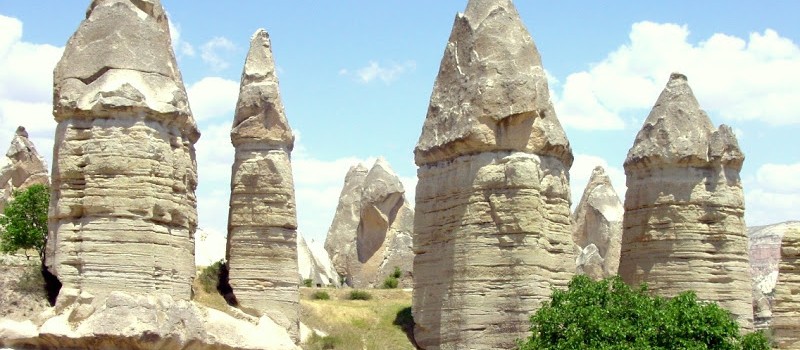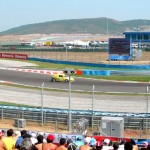Amazing Volcanic Rock Formations of Cappadocia & UNESCO World Heritage Site Part – 2
The journey continues….
The following morning we did a day long tour starting with Imagination Valley after which we visited the region of Pasabag which has some of the most amazing forms of chimney in volcanic rock which is synonymous to the region of Cappadocia. The other name of this valley is Monks Valley as it is believed that in the 8th century there were many saints who lived here and we visited the house of one such saint – St. Simon. Avanos is a lively town with a shopping centre on one side and a beautiful maze of old stone houses on the other, some restored and some simply abandoned by fate. The Kizilirmak or the Red River separates Avanos from the rest of Cappadocia and is supposedly the longest river in Turkey. It is from this river that you find the red pottery clay in the region. In some of the houses at Avanos you can also find the murals and motifs of the Ottoman era.
Pottery has been produced in the Avanos area for several centuries and some of the techniques still used date back to Hittite times. Avanos is a mass of family run potteries, most of which are only too pleased to let visitors have a go on the potter’s wheel and give them a full history of the many and various pottery goods on offer. Avanos pots make wonderful souvenirs.
Our next halt was at Göreme-an open air museum and one of the most important centres of Christianity. Göreme is 15 km east of Nevsehir and 5 km west of Ürgüp.
In Göreme, you will find over 600 churches which are carved by rock formations. It is difficult to say when the Christians came here, but it is believed that it was after St. Paul which was around 2nd century. Göreme has a friendly and relaxed atmosphere but there is café society and nightlife in the centre of the village for those who fancy something more lively.However, the main attraction of the region is the great concentration of rock-cut chapels and monasteries. Many of the churches here feature Byzantine frescoes which depicts various scenes from the life of Christ. Several caves have been restored in this area and some of churches amongst many are the Barbara Church, the Tokali Church and the Yilanli Church. You can also do a camel ride around the region and also climb up to the Kizlar Monastery.
Most of the frescoes in the churches have been damaged over the years but the beauty of the churches and their decoration is still apparent on visiting Göreme. The best preserved frescoes are in the Dark Church or KranlikKilise.
We also visited the Apple Church and the Snake Church.
The Apple Church is one of the smaller churches in the area, carved in the sign of a Greek cross with four irregular pillars supporting a central dome. The name of the church is believed to refer to a reddish orb in the left hand of the Archangel Michael in the dome of the main apse, although there’s also speculation that there used to be an apple tree at the entrance to the church and hence it got the name of the Apple Church.
The Snake Church is a simple barrel-vaulted church with a low ceiling and long nave. One fresco represents Saints Theodore and George slaying the dragon (looking suspiciously like a snake), with Emperor Constantine the Great and his mother Helena depicted holding the “True Cross.” Legend has it that she discovered the cross upon which Jesus was crucified after seeing it in a dream, and that a piece of the cross is still buried in the foundations of the Hagia Sophia in Istanbul.
After having spent a couple of hours at Göreme, it was time to head back to Ürgüp The following day I took the flight from Kayseri to Izmir for the last leg of my journey inTurkey where I would be visiting the exciting region of the Aegean Sea starting with Kusadasi and then moving on to Ephesus and also to Hierapolis and Pamukkale which also is part of the UNESCO World Heritage Site.




